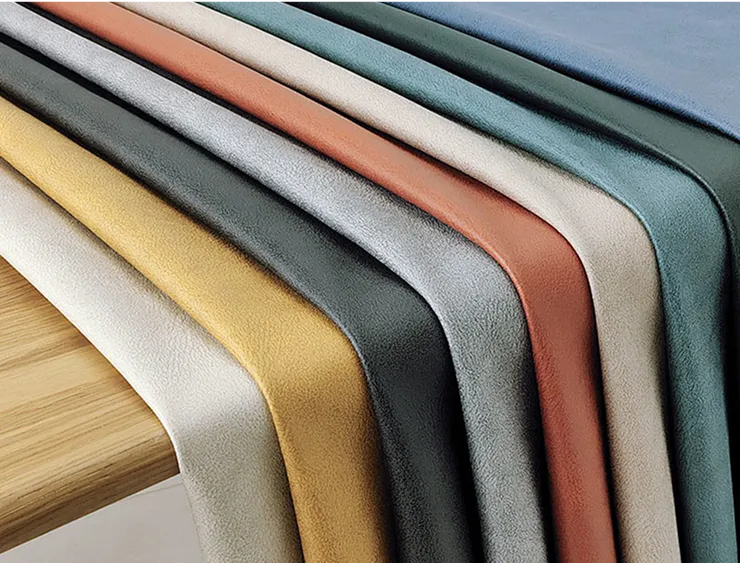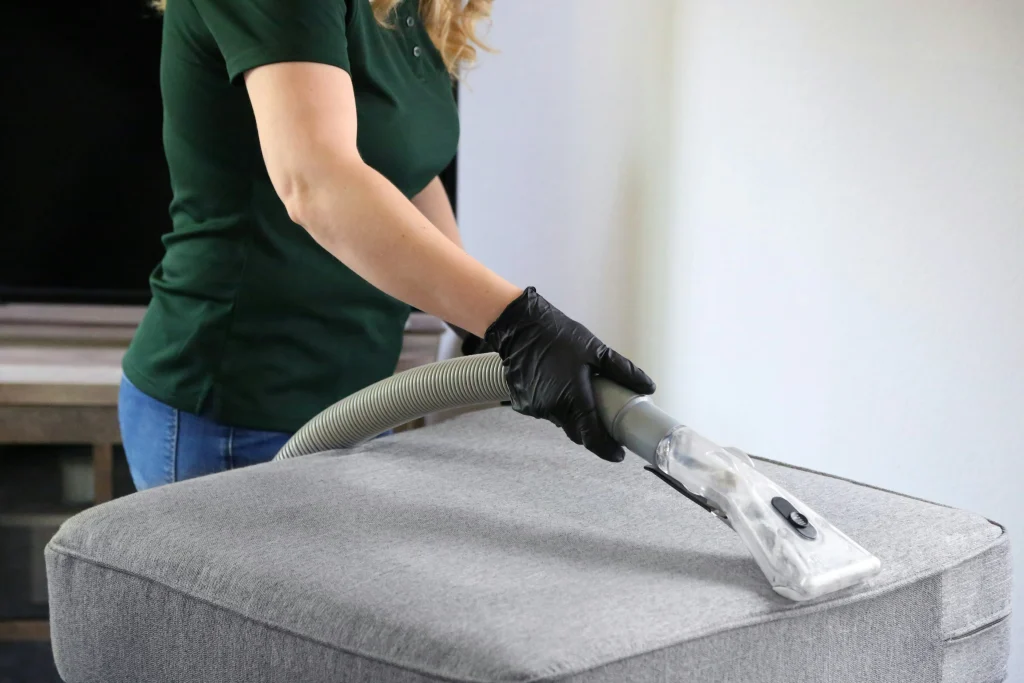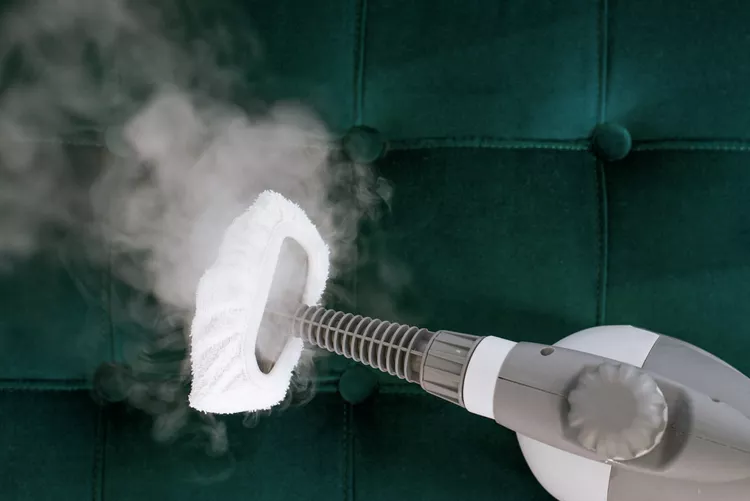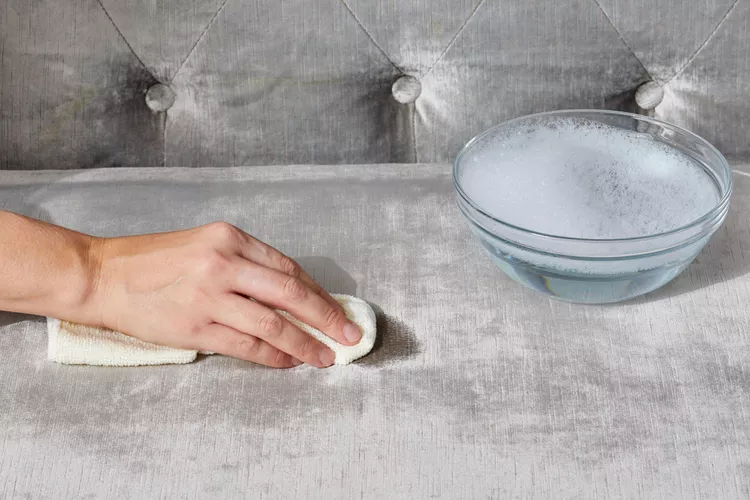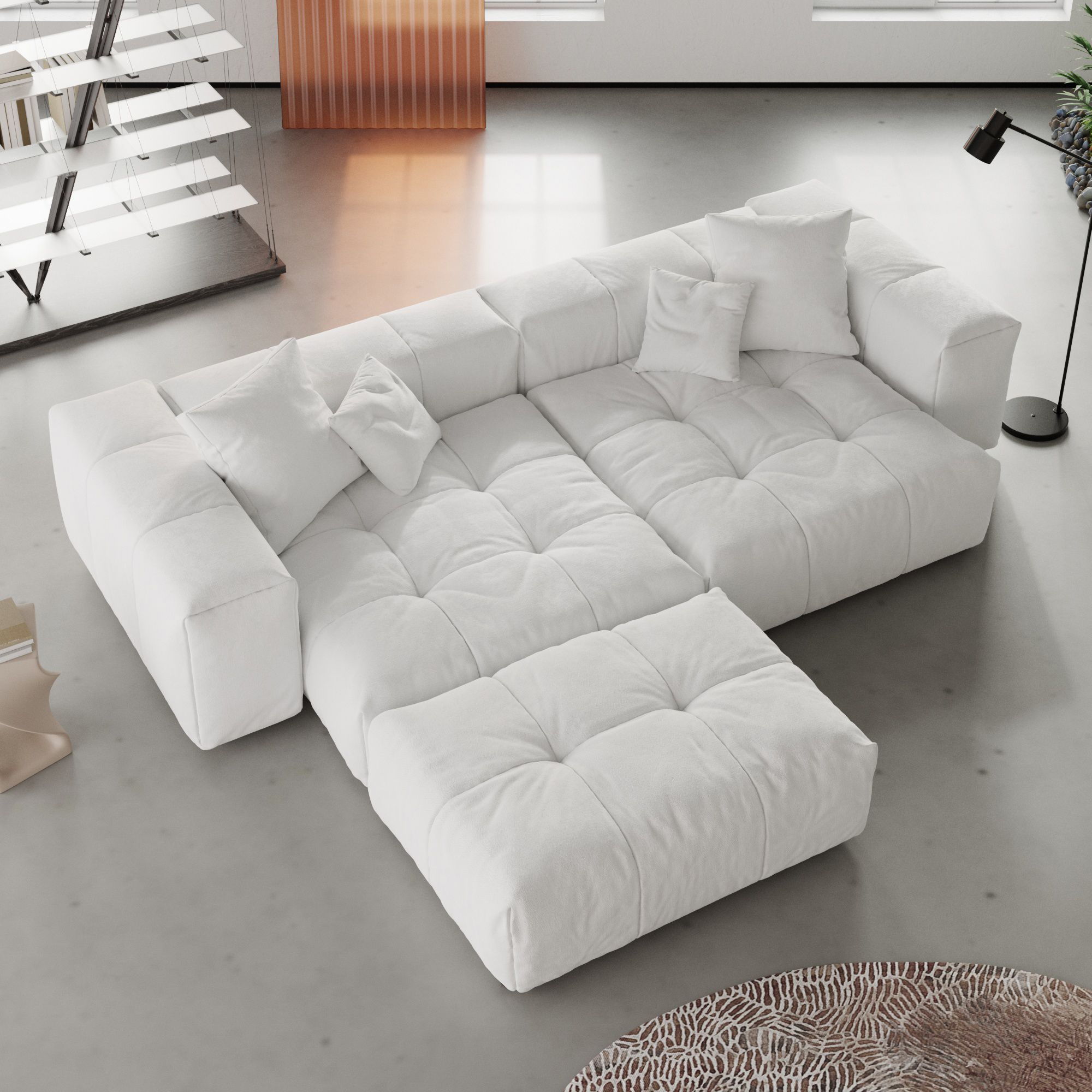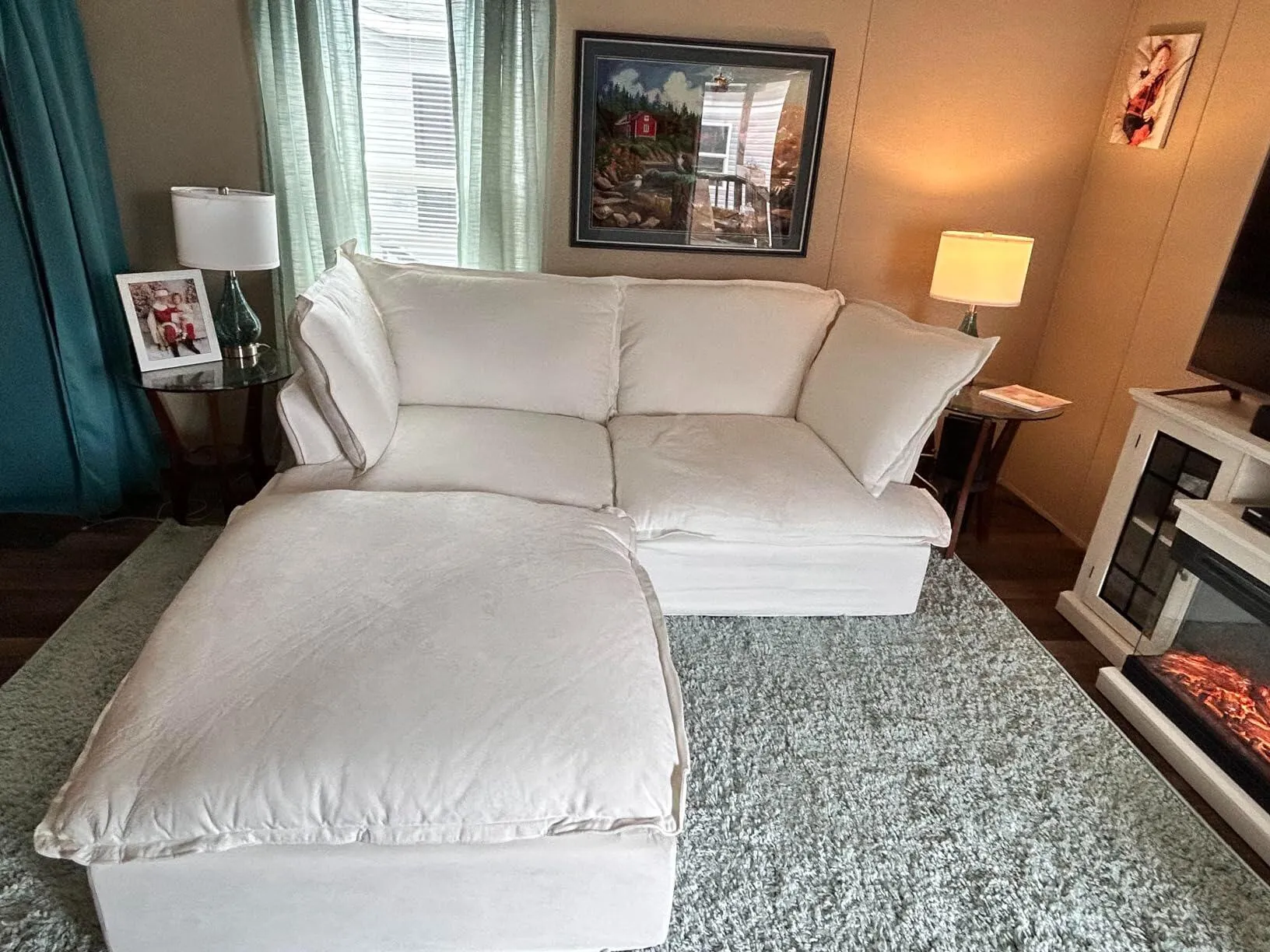A fabric sofa is more than just a place to sit—it’s where you relax, spend time with family, and even entertain guests. Keeping it clean not only makes your home feel fresh but also helps the sofa last longer and stay comfortable. Fabric sofas often deal with everyday problems like stains, dust, pet hair, and unwanted odors, which can build up over time if not taken care of. The good news is, cleaning doesn’t have to be difficult. In this guide, you’ll find easy tips and DIY methods to keep your fabric sofa looking fresh, cozy, and ready for everyday life.
How to Clean a Fabric Sofa: Complete Care Guide

Understanding Your Fabric Sofa
Check the Manufacturer’s Label
Before you grab a cleaner, take a quick look at the sofa’s label. You’ll see a code that tells you what’s safe to use:
- W – water-based cleaners are okay.
- S – only solvent-based cleaners.
- WS – you can use either water or solvent cleaners.
- X – no liquids at all, just vacuuming.
These little letters make a big difference. Following them helps keep your sofa safe and looking good.
Types of Fabric Upholstery
Sofas come in many fabrics, and each one needs its own kind of care.
- Natural fabrics like cotton, linen, and wool feel soft and comfy but can stain more easily.
- Synthetic fabrics such as polyester, microfiber, and acrylic are strong, durable, and usually easier to clean.
- Blended fabrics mix natural and synthetic fibers. They’re practical, but some blends may need extra care.
Once you know your sofa’s fabric, choosing the right cleaning method becomes much easier.
Preparing Your Sofa for Cleaning
Gather Cleaning Supplies
Get everything ready before you start. You’ll need a vacuum cleaner with an upholstery tool, some microfiber cloths, and a soft brush. For cleaning, keep mild detergent, baking soda, vinegar, or a sofa-safe upholstery cleaner on hand. Having these supplies nearby makes the job quick and stress-free.
Pre-Cleaning Steps
Take off the cushions and covers if your sofa allows it. Give them a shake outside to get rid of loose dirt and dust. Before using any cleaner, always do a spot test on a hidden area. This way, you can be sure it won’t damage or discolor the fabric.
Preparing Your Sofa for Cleaning
Gather Cleaning Supplies
Get everything ready before you start. You’ll need a vacuum cleaner with an upholstery tool, some microfiber cloths, and a soft brush. For cleaning, keep mild detergent, baking soda, vinegar, or a sofa-safe upholstery cleaner on hand. Having these supplies nearby makes the job quick and stress-free.
Pre-Cleaning Steps
Take off the cushions and covers if your sofa allows it. Give them a shake outside to get rid of loose dirt and dust. Before using any cleaner, always do a spot test on a hidden area. This way, you can be sure it won’t damage or discolor the fabric.
What You’ll Need to Remove Stains
Before you tackle that stubborn spot, round up these essentials:
- A vacuum cleaner with an upholstery tool
- Several microfiber cloths for blotting and wiping
- A soft brush (like an old toothbrush) for gentle scrubbing
- Mild detergent or sofa-safe upholstery cleaner
- Baking soda and white vinegar for natural stain-busting power
- Distilled water for diluting cleaners and rinsing surfaces
Having these basics at the ready will make stain removal smoother—and help protect your fabric from accidental damage.
How to Clean Spring Down Cushions vs Foam Cushions
Not all sofa cushions are created equal—especially when it comes to what’s inside. Spring down and foam cushions need slightly different care to keep them comfortable and long-lasting.
Spring Down Cushions
If your cushions have a blend of springs and down feathers, gentle spot cleaning is the way to go. Use a mild soap mixed with water and dab any spots or spills with a soft cloth. Be careful not to soak the cushion—the springs can rust or lose their bounce if they get too wet. Once you’re done, let the cushion air dry completely before using it again. This helps prevent mildew and keeps the inside fresh.
Foam Cushions
Foam cushions, on the other hand, often come with removable covers. If yours do, simply unzip and check the care label—most can handle a gentle spin in the washing machine. For foam cushions without a removable cover, use the same spot-cleaning technique as above: a little gentle soap, a damp cloth, and a light touch. If you’re dealing with a stubborn stain or a deep-down clean, it’s best to call a professional upholstery cleaner. Always air-dry foam cushions in a well-ventilated spot, but keep them out of direct sunlight—too much sun can make the foam brittle over time.
Knowing which type of cushions you have helps you give them the right care, so they’ll stay plush and comfy for years to come.
How to Dry Foam Cushions Safely
After cleaning foam cushions, proper drying is key to prevent mold and keep them in good shape. Gently press out as much water as possible—don’t twist or wring, as this can damage the foam. Place the cushions upright in a well-ventilated space, ideally near an open window or a fan to help speed up drying time.
Avoid placing cushions in direct sunlight, as strong UV rays can cause the foam to weaken or become brittle. It might take several hours or even a full day for thick cushions to completely dry, so be patient. Make sure they’re fully dry before putting the covers back on or returning them to the sofa—this helps keep your sitting area fresh and free from unpleasant odors.
Routine Cleaning for Fabric Sofas
Vacuuming the Sofa
Vacuum your sofa often to keep it fresh and dust-free. Use the brush tool for the surface and the crevice tool to reach corners and seams. A weekly vacuum works well for most homes, but if you have pets or allergies, you may want to do it more often. This helps remove dust, crumbs, and allergens before they settle in.
Deodorizing with Baking Soda
Baking soda is a simple, natural way to fight odors. Sprinkle a light layer over the sofa and let it sit for about 20 minutes. Then vacuum it up using the upholstery tool. It leaves the fabric clean and fresh without any harsh chemicals.
Disinfecting Your Fabric Sofa at Home
Sometimes, you want to go beyond everyday cleaning and give your sofa a proper disinfecting—especially after cold season or if pets and kids have been extra busy. Good news: you don’t need fancy equipment or professional services.
To make a gentle disinfectant spray, simply combine equal parts rubbing alcohol and water in a spray bottle. For an extra boost, a drop or two of tea tree or lavender essential oil (known for their antibacterial properties) can help freshen things up. Lightly mist the sofa’s fabric (don’t soak it!) and let it air dry. Rubbing alcohol evaporates quickly, helping to kill germs without harming most fabrics.
Once your sofa is dry, you can finish by vacuuming the surface to remove any leftover residue or dust. This easy step keeps your fabric sofa hygienic while preserving its cozy comfort.
Spot Cleaning Stains
Food and Drink Spills
When food or drinks spill, act fast. Blot the spot gently with a clean cloth. Do not rub, as this spreads the stain deeper into the fabric. For coffee, wine, or juice, use a mix of mild soap and water or a fabric-safe cleaner. Dab the stain until it lifts.
Grease and Oil Stains
Grease and oil need a different approach. Sprinkle cornstarch or baking soda on the stain and let it sit for 15 minutes. This helps absorb the oil. Then brush it off and clean the spot with a gentle soap-and-water solution.
Ink and Dye Stains
Ink and dye stains can be tough. Try a little rubbing alcohol on a cotton ball and dab gently. Vinegar mixed with water can also help. If the stain won’t budge, it may be time to call a professional cleaner.
Spot Cleaning Spring Down Cushions
Spring down cushions call for a gentle touch to keep them in great shape. Use a mild soap mixed with water to clean any spots—dab the area lightly with a clean, damp cloth rather than soaking the cushion. Too much moisture can cause the springs inside to rust or lose their bounce.
After cleaning, let the cushion air dry completely before putting it back on your sofa. This helps prevent any chance of mildew or lingering odors. Set the cushion somewhere with good airflow, and avoid direct heat sources like hair dryers or radiators, which might damage the filling.
Deep Cleaning a Fabric Sofa
DIY Cleaning Solutions
You don’t always need fancy products to clean your sofa. A simple vinegar and water mix works well for most stains. Combine equal parts vinegar and water, then lightly spray or dab the area. For general cleaning, mix a few drops of mild dish soap with warm water. Use a soft cloth to scrub gently, then wipe with a damp cloth to remove any residue. Always test on a hidden spot first.
Using a Steam Cleaner
A steam cleaner can give your sofa a fresh, deep clean. Start by vacuuming to remove dust and crumbs. Fill the cleaner with water as directed and slowly run it over the fabric. Work in small sections so the sofa dries evenly. Be careful not to soak the fabric, as too much water can cause damage or mold. Let the sofa air dry completely before using it again.
Special Care for Different Fabrics
Microfiber Sofas
Microfiber is durable but can trap dust and oils. Use a soft brush to lift dirt and keep the surface smooth. For stains, an alcohol-based cleaner often works best. Spray lightly, blot with a clean cloth, and let it dry. Brushing afterward helps restore its soft texture.
Cotton and Linen Sofas
These natural fabrics are breathable and comfortable, but they need gentle care. Mix a small amount of mild detergent with water to spot clean. Avoid harsh scrubbing, as it can damage the fibers. If the sofa feels musty, place it near a sunny window for a short time—sunlight helps freshen it up naturally.
Velvet and Delicate Fabrics
Velvet adds elegance but needs extra attention. Always brush it in the same direction to keep its smooth look. For stains, it’s best to avoid DIY solutions, as velvet can be tricky. Professional cleaning is usually the safest choice for delicate fabrics like velvet or silk.
Caring for Foam Cushions
Foam cushions often get overlooked, but a little care can help them stay comfy and supportive.
Removable Covers: If your cushion covers unzip or slip off, always check the tag for cleaning instructions. Most removable covers can go straight into the washing machine on a gentle cycle with mild detergent—just remember cold water is best to prevent shrinking. Air-dry the covers, rather than popping them in the dryer, to help the fit stay perfect.
Non-Removable Covers: For cushions without a removable cover, spot cleaning is your go-to. Mix a few drops of gentle detergent in warm water, then use a soft cloth to dab away stains or spills—don’t soak the cushion, just lightly clean the spot. For a deeper clean, professional upholstery cleaners have special tools to help.
Drying: After any washing or spot cleaning, let the foam cushion air dry completely in a well-ventilated spot. Skip direct sunlight, since too much can break down the foam over time and leave it misshapen.
Looking after your foam cushions this way keeps them fresh, fluffy, and ready for lazy afternoons.
Preventive Maintenance Tips
A little care every day can help your fabric sofa last longer and stay looking fresh.
- Use sofa covers or throws – Protective covers keep dust, pet hair, and accidental spills from reaching the fabric. Plus, you can change them seasonally for a new look.
- Rotate cushions to prevent wear – Switching cushions around helps distribute weight evenly, so no single spot gets saggy or faded too quickly.
- Keep food and drinks away from fabric sofas – It may be tempting to snack on the couch, but avoiding crumbs and spills will save you from tough stains later.
Caring for Spring Down Cushions
Spring down cushions need a bit of extra care to avoid pesky problems like rust or mildew. Here’s how to keep them in good shape:
- Clean with care – Stick to spot cleaning with gentle soap and water, and never drench the cushion. Too much moisture can sneak inside and cause springs to rust or lose their bounce.
- Dry thoroughly – After any cleaning, make sure the cushion is 100% dry before putting it back in place. Air drying in a well-ventilated space works best, and a little sunshine can help speed up the process.
- Stay vigilant – If your cushion ever gets soaked from a spill or cleaning mishap, unzip the cover (if possible) and allow the filling and cover to dry separately. This helps keep mildew and musty smells at bay.
When to Call Professional Cleaners
Even with the best home care, there are times when your sofa needs a little extra love from the pros.
- When it might be time – If stains just won’t budge, your sofa still smells funky after cleaning, or the fabric looks flat and tired, professional cleaners can step in. They’re especially helpful for tricky fabrics like velvet or antique pieces that need a gentle touch.
- Why it can be worth it – Yes, it can cost more than doing it yourself, but the payoff is huge. Professionals have the right tools and know-how to give your sofa a deep, safe clean that makes it look fresher and last longer. Think of it as a little spa day for your sofa!
Conclusion
Keeping your fabric sofa clean doesn’t have to be a big chore. With a mix of regular care, quick spot treatments, and the occasional deep clean, you can keep it looking fresh and inviting. The key is knowing your fabric type so you can choose the safest and most effective cleaning method. And remember, if stains get too stubborn or the fabric needs special attention, calling in a professional is always a smart move. A little care goes a long way in keeping your sofa cozy, stylish, and ready for everyday life.

